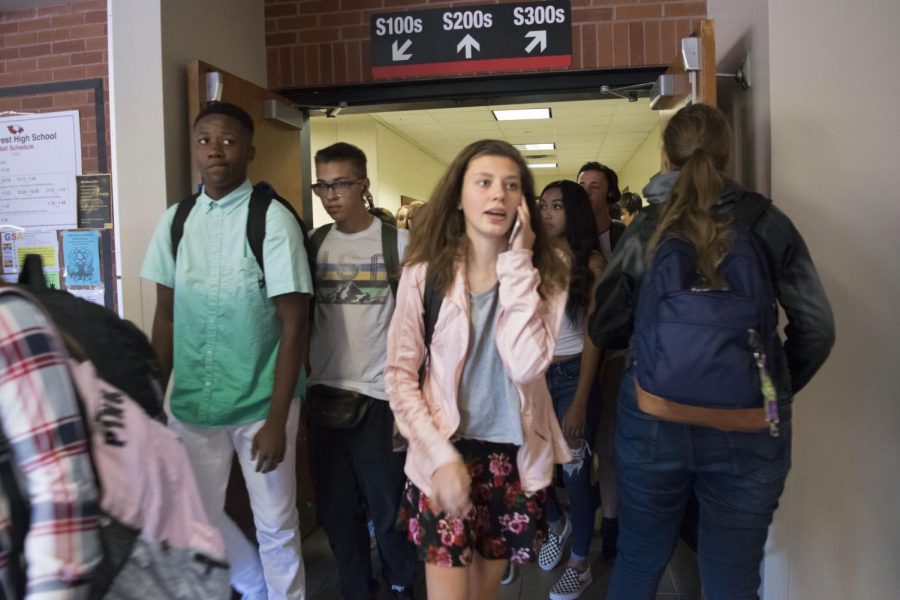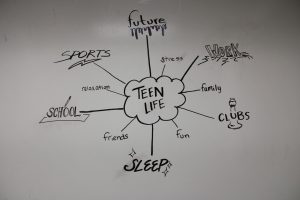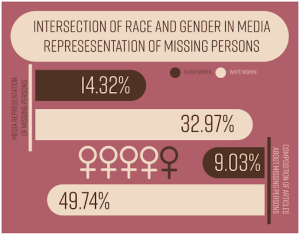Students Swarm Eaglecrest halls
September 7, 2018
Classes have moved out to mobiles and hallways are more crowded than in past years due to the population boom at Eaglecrest. The increase in students in the Freshman class has led to safety and learning concerns.
To help address a growing population the Eaglecrest administration has done a number of things to ensure everyone gets the best learning experience possible in a safe environment.
“We looked at the ways the students are moving in the facility and we did open up the breezeways,” Principal Gwen Hansen-Vigil stated.
Those breezeways are the open walkways that connect the east and west side of the building. This adds two more passages across the school, which is now six total halls, to help alleviate the traffic.
Shane Snyder, Assistant to the Principal, addressed what this means for safety. “We were able to hire an additional security staffer, so now we have security out who will monitor the doors. They unlock and lock them again.”
Kylee Hallada, like other students, face other concerns in the case of an emergency.
“If there was ever a fire things would not go well. There are so many people that it would be really hard to escape something that would happen in the school.”
However fire evacuation routes haven’t changed with an increase in students, but for a good reason. The number of students in a classroom hasn’t changed.
“I haven’t had a class that goes over thirty, but in years past I have. We brought on a lot more teachers. So we have more students in the building, but we really shouldn’t have that many more students in the class,” Heather Fraase, an English teacher, stated.
However, Lindsey Pesek, a performing arts teacher, has seen otherwise.
“In the drama room we ran out of desks. Ms. Swenson has a class that’s too big. She has kids just sitting in regular chairs that she has to pull in. So desk space has been an issue,” Pesek elaborated.
Without adding more students to classes, there is no reason to change safety procedures. Evacuation routes are planned based on classrooms and how many people can reasonably, and quickly, leave an area through one door.
Hansen-Vigil stated, “We do it based on number of classrooms. We know that based on where the physical locations are in the building how many of them (students), at capacity, can actually move out of that particular area.”
Pep assemblies add another layer of discussion, with more students being fit into one space than ever before.
Snyder added, “There is a lot of thinking around what it needs to look like. We’ve talked about, and I don’t know if this will happen just yet, bringing in potentially some portable bleachers, and being able to put some tape and create some spaces to designate where kids will be and designate where events will take place.”
The sitting capacity in the gym is 2,726 people at a time, which is exceeded by the number of students enrolled and staff members.
Hansen-Vigil explained, “There is capacity passed on seating, but there is also additional capacity based on standing. So we continue to stay in touch with our agencies around that, but they’ll advise us as to what that is.”
Safety isn’t the only thing on people’s minds however. Students come to school to learn, but more students leads to concerns on the quality of education. Administration and teachers alike stress the idea that classes aren’t growing in size as the population of the school increases.
“How are schools are staffed is based on a ratio. When you have an increased number of students you have an increased number of teachers. We had a larger than normal hiring class because of the increased enrollment,” Hansen-Vigil explained.
More teachers means more classes being taught so the students can be more spread out and not lose any learning potential.
Fraase finds no change within the classroom, “The overpopulation does not make it harder. We’ve had to do this for several years. I think teachers are finding their rhythm when teaching with large class sizes.”
A growing population has led Eaglecrest to add another lunch time. While third lunch is no later than when second lunch used to be, there is an interruption to students during third period. This year, second lunch falls right in between third period for some and doesn’t include time for passing periods, making it the shortest lunch period of the three.
“For the classes that have the middle lunch, it disrupts the learning,” Fraase who has the middle lunch every day added.
While we do have an extra lunch, there is still an increase in students that can’t always be helped.
Pesek stated, “I [have concerns] about kids getting food and eating it before getting back to class. That’s been an issue. I still have been hearing ‘oh man I just bring my lunch from home because I can’t stand to stand in that line’ because there’s so many kids.”
In years past, Snyder explained, we had four lunches at one point. Different lunch periods, while a pain to some, do add an alternative way to make sure the lunch room isn’t over flowing with students.
While Eaglecrest is at an all time high due to the boundaries drawn for the district. Three middle schools feed into Eaglecrest, while other schools like Smoky Hill have populations that are aging out and have an all time low population.
“I genuinely feel like our solution is to change the school boundary lines. If we have a school in our district that is at an all time low and they have vacancies and classes being cancelled because they don’t have enough kids to fill those classes and we have overflow, that needs to be changed,” Pesek explained.
It won’t be an immediate change, but it is a conversation starting in the district and communities around CCSD high schools. The amount of students isn’t changing anytime soon, but it will be leveling out in the next few years. For now the Eaglecrest Raptors will have to embrace the diversity our growing population brings.
Hansen-Vigil concluded, “Because we have always been such an inclusive warm place I don’t feel anything but excitement that there are more people that know they are Raptors.”







